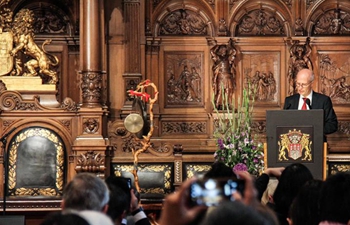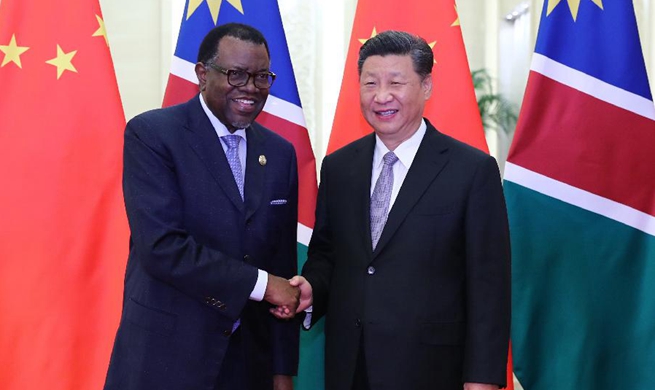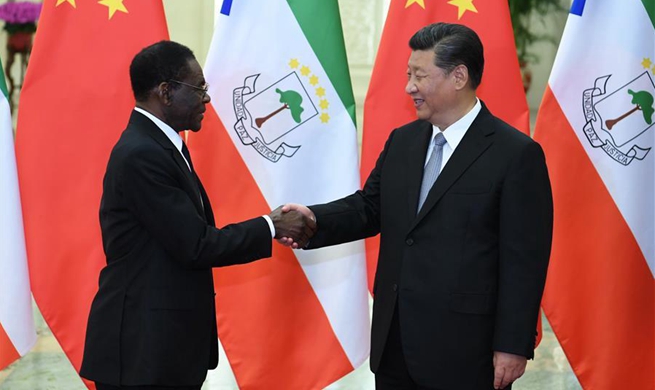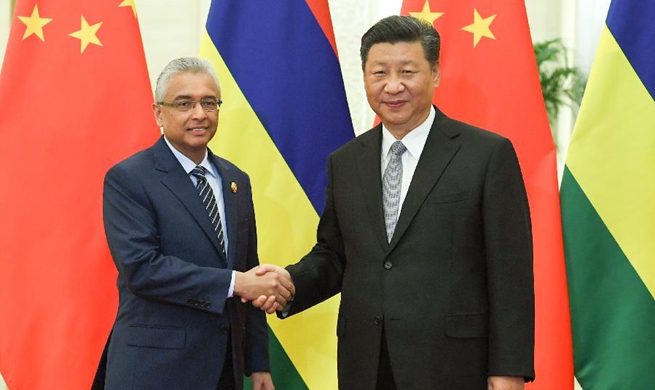by Jit Kumar
NEW DELHI, Sept. 2 (Xinhua) -- India regaining its world's fastest-growing economy status, with its gross domestic product (GDP) zooming to 8.2 percent in the first quarter of this fiscal, has sent a wave of cheers among policy-makers and common man alike.
The data released by the Central Statistics Office (CSO) showed that between April and June this year, the economy was powered by a strong performance of the manufacturing and farm sectors and gained further strength from consumer spending. The Indian government's reform policies increased the boost, the CSO report added.
The 8.2-percent growth has been the fastest expansion of the economy since the January-March quarter of 2016. In the previous quarter, the growth figure stood at 7.7 percent while in the same quarter last year, growth was registered at 5.6 percent.
At the same time, the manufacturing sector grew at an annual rate of 13.5 percent while the farm sector, which registered a decline of 3 percent in first quarter of 2017-18, grew 5.3 percent.
This is despite the fact that the International Monetary Fund (IMF) had trimmed India's growth projection for 2018-19 by 10 basis points to 7.3 percent in its World Economic Outlook released last month, citing negative effects of higher crude oil prices on domestic demand and faster-than-anticipated monetary policy tightening because of higher-than-expected inflation.
According to a Reserve Bank of India's (RBI) recent report on demonetization, invalidation of higher value currencies in November 2016 had indicated that Prime Minister Narendra Modi government's move to deal a blow to black money did not work as desired.
Experts pointed to structural reforms and policies of the government behind this positive growth rate.
"The reforms and effective implementation of ongoing policies and other initiatives by the government have bolstered the economy. Employment-supporting sectors such as construction and manufacturing have also been buoyant which supplemented the growth dynamics," said Ravinder Ahuja, a Delhi-based economist.
Experts also believed that the growth rate might be negatively affected in the next quarter but India would remain the fastest growing major economy.
"The base impact will be moderated by higher growth than estimated and growth will be higher than last year. This is because construction is doing well which was not so last year," says Professor D.S. Mathur, formerly of the economics department at Delhi University.
"Spending on infrastructure will go up. Consumption will also increasing due to increase in income and low inflation. All these will further accelerate growth."
Even common people are happy with the economic growth. "The economy is picking up. Hiccups will be there but overall India is surging ahead as a global economic power," said Aditi Rai, a Delhi-based housewife.
However, critics, mainly opposition parties, pointed to the rising crude oil prices, interest costs and the weakening of the rupee besides fiscal constraints.
"The rupee touched a new low at 71 per U.S. dollar this week. So far this year, the rupee has weakened 9.98 percent, making it the worst performer among Asian currencies," says a leader of opposition Congress party.
"This fall is due to persistent demand of the U.S. dollars amid rising crude prices. So to say that the first quarter growth brings cheers will be too early."
In a tweet following the declaration of the growth results, even former finance minister and Congress leader P. Chidambaram said the advantage of a favourable base in the June quarter would not be going forward.
"When we reach Q3 and Q4, the rate of growth may decline and the annual growth rate may be more or less like last year's," he pointed out.
However, the jump in the GDP ahead of the general elections next year would help support the government amid a debate over its economic record versus that of its predecessor -- former Prime Minister Manmohan Singh's government.?













